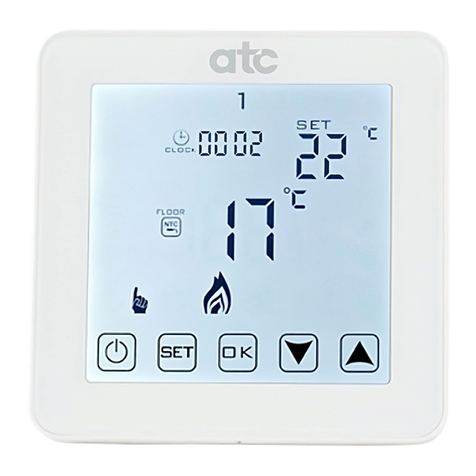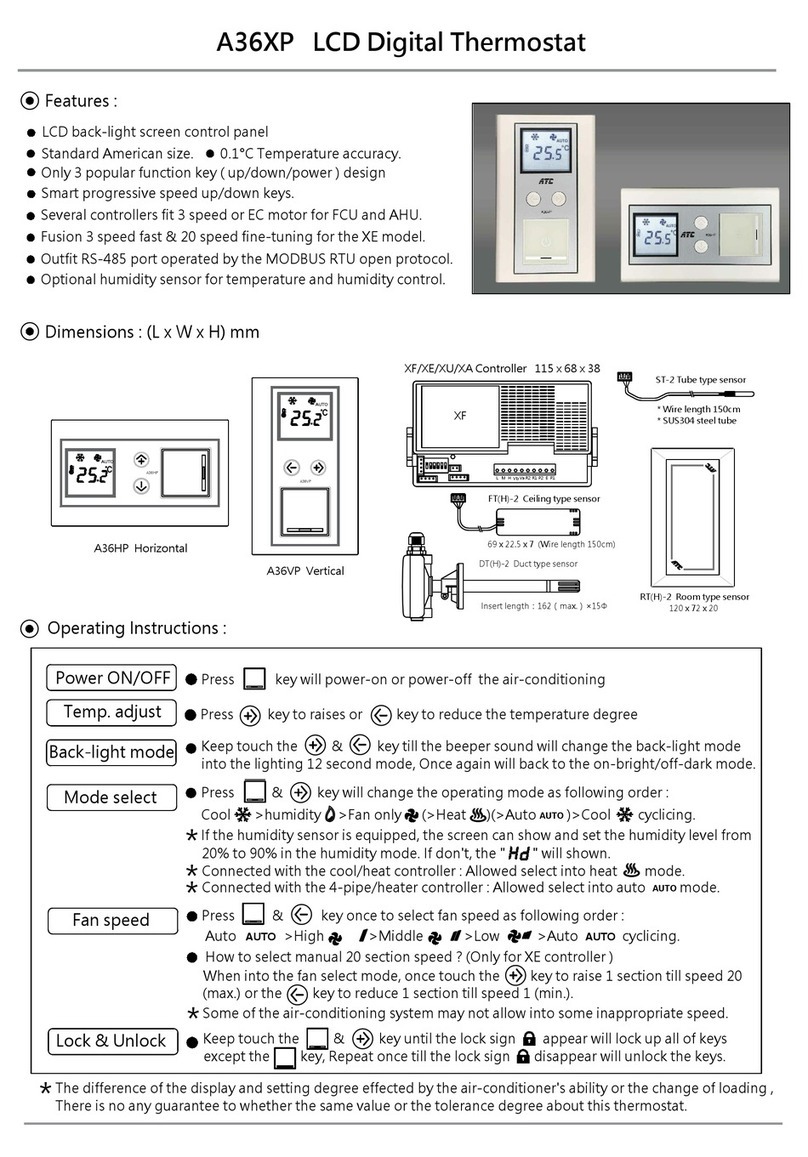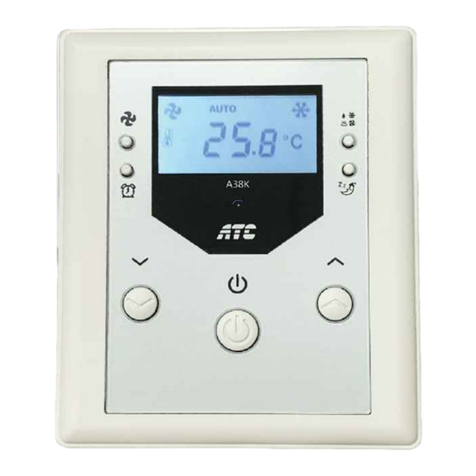Knöpfe Display Symbole
N
M
L
K
H
I
J
A: B: C: D:
E: F: G:
Nadelknopf
Regelung
der Zeit
Ein/Aus Zurückstellung
auf Werks-
programm
Regelung
nach unten
OK -
Akzept Regelung
nach oben Display
H: I: J: K:
L: M: N:
Uhren-
Funktion Manueller
Betrieb Zeit und
Temperatur Tag
Heizung
einge-
schaltet
%
Überwachung
der
Einschaltzeit
4-Event Symbol
1. Inbetriebnahme
Einführung
Mit dem OCC2-Thermostaten kann das Heizsystem zu vorgegebenen Zeiten an verschiedenen Wochentagen eingeschaltet werden. Bis zu 4 verschiedenen
Perioden, auch Events genannt, können jeden Tag mit verschiedenen Temperaturen verwendet werden. Ab Werk enthält der Thermostat eine
Standardprogrammierung, die für die meisten Heizsysteme geeignet ist. Falls diese Programmierung nicht geändert wird, wird der Thermostat mit dem
Standardprogramm laufen.
Niedrigere Temperaturen in einem Raum, der momentan nicht benutzt wird, werden die Heizkosten senken ohne den Komfort zu mindern. Der Thermostat
beinhaltet eine adaptive Funktion, die automatisch die Startzeit einer Heizperiode ändert, so dass die gewünschte Temperatur zu dem eingegebenen
Zeitpunkt erreicht wird. Nach 3 Tagen hat die adaptive Funktion gelernt, wann die Heizung eingeschaltet werden muss.
Typ OCC2-1991H1 hat einen externen Temperaturfühler, der normalerweise in der Bodenkonstruktion angebracht ist. Der Thermostat kontrolliert dann die
Bodentemperatur und nicht die Raumtemperatur.
Typ OCC2-1999H1 hat einen eingebauten Temperaturfühler. Der Thermostat kontrolliert die Raumtemperatur, und der externe Temperaturfühler sollte nicht
installiert werden.
Der Thermostat hat einen Nadelknopf, R, womit der Thermostat auf die Werkseinstellungen zurückgestellt werden kann. Diese Einstellungen werden am
Ende dieser Bedienungsanleitung aufgeführt, mit zusätzlichem Raum für die Eingabe des eigenen Wochenprogramms.
Bei Betätigung der Knöpfen ist das Display von hinten beleuchtet. Das Heizelement wird abgeschaltet wenn das Display beleuchtet ist.
Das Heizungssystem kann über den eingebauten Schalter ausgeschaltet werden. Der Mikroprozessor, der die Zeitangabe steuert, wird mit Spannung
versorgt, wobei die Eingaben für Zeit und Tag aufrechterhalten bleiben. Wenn Wärme gewünscht wird, und der Thermostat eingeschaltet wird, wird dieser
das 4-Event Programm mit der gegenwärtigen Zeit und dem gegenwärtigen Tag fortsetzen.
Inbetriebnahme des Thermostaten
1-7
Die Knöpfe ( ) oder ( ) betätigen, um die Zeit
einzustellen. Dann den OK-Knopf ( ) betätigen.
Die Knöpfe ( ) oder ( ) betätigen, um den Tag
einzustellen. Dann den OK ( ) betätigen.
Wenn der Thermostat zum ersten Mal eingeschaltet wird, blinken die Uhr und der Tag und
müssen eingestellt werden. Falls die Zeiteinstellung des Thermostaten auf einen späteren
Zeitpunkt verschoben werden muss, muss ein Stift in das Loch gesteckt werden, wonach
Zeit und Tag eingestellt werden können. Winter- und Sommerzeit müssen eingestellt werden.
Aufwachung
Nacht
Ausser Haus
Zuhause
Deutsch






























